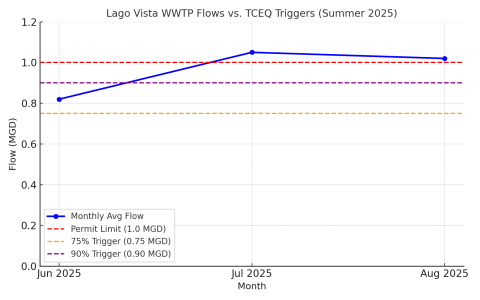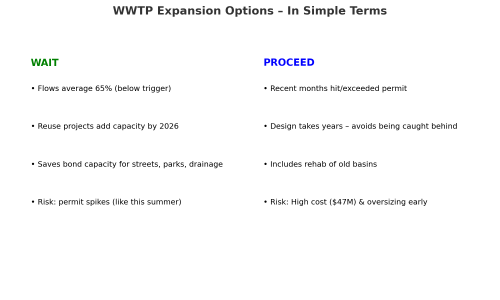Paul Roberts
Former Council Member
Dear Colleagues,
I’ve submitted an item for the June 26 agenda to formally refer a set of technical concerns raised by former Public Works Director David Stewart to our engineering consultants and staff.
These concerns challenge several assumptions and project justifications in the City’s 2024 Wastewater Master Plan and 2025 Water Master Plan. Examples include infrastructure ownership, omitted or mischaracterized force mains, duplicative rehabilitation projects, routing errors, and feasibility issues due to FAA restrictions.
Given the potential implications for the City’s planning, budgeting, and infrastructure decisions, I believe these claims warrant technical review and verification. The referral would ask staff to evaluate the concerns, determine which are valid, and advise whether any corrective action or amendments are appropriate.
I’m attaching a copy of excerpts from Mr. Stewart’s email and the formal agenda item coversheet for those interested in reviewing the details.
I’ve submitted an item for the June 26 agenda to formally refer a set of technical concerns raised by former Public Works Director David Stewart to our engineering consultants and staff.
These concerns challenge several assumptions and project justifications in the City’s 2024 Wastewater Master Plan and 2025 Water Master Plan. Examples include infrastructure ownership, omitted or mischaracterized force mains, duplicative rehabilitation projects, routing errors, and feasibility issues due to FAA restrictions.
Given the potential implications for the City’s planning, budgeting, and infrastructure decisions, I believe these claims warrant technical review and verification. The referral would ask staff to evaluate the concerns, determine which are valid, and advise whether any corrective action or amendments are appropriate.
I’m attaching a copy of excerpts from Mr. Stewart’s email and the formal agenda item coversheet for those interested in reviewing the details.


